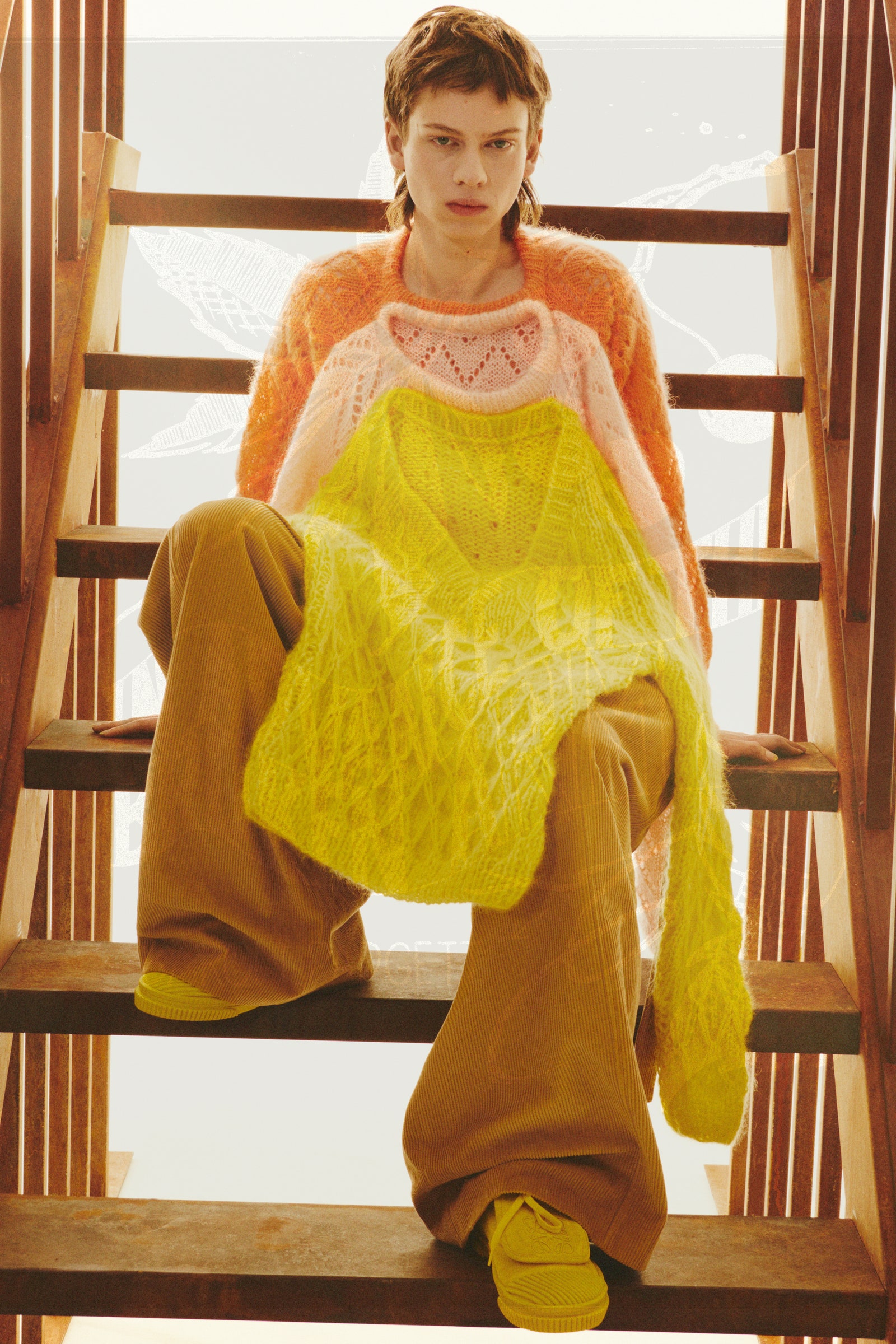There’s a lot of chatter, among both the veterans and the very young, about how fashion used to be so great. Even the Zoomers seem to agree that the ’90s, a
decade when few of them were even alive, represented a golden era packed with designers whose genius far exceeded that of anyone working today. There are a ton of differences between then and now. But one thing I keep thinking about, particularly as I listen to In Vogue: The 1990s,Vogue’s terrific podcast about that decade, and re-read books by the writer Teri Agins, is that fashion used to be a subculture. Its niche status afforded its arbiters and participants (including shoppers) a reputation of expertise, of connoisseurship. It wasn’t something everyone followed or knew about—and it certainly didn’t need celebrities, because it had its own, in designers, models, writers, hangers-on, and obsessive consumers.
Now, fashion is popular culture, and even casual fans know the big names. Major models are major celebrities, and the most out-there runway pieces appear on athletes, movie stars, television stars, and podcasters. There is more fashion, and more people buying it, or at least paying attention. (I saw a number of non-fashion journalists tweeting the cityscape looks from Virgil Abloh’s Vuitton collection, for example.) We now expect fashion designers to weigh in on politics—back in 1998, you’d never have pressured Tom Ford to opine on Bill Clinton’s sexual indiscretions and impeachment, however raunchy Ford’s work at Gucci was.
Okay, so there’s no Martin Margiela or Helmut Lang, but there are some great designers who are really meeting their moment and adapting to these times, like Rei Kawakubo, Rick Owens, and Jonathan Anderson. Kawakubo and Owens, of course, are veterans. Anderson, who is 36, is the quintessential young designer: a real creative, always in pursuit of and championing ideas, with the mind of a marketer. Twice a year, as Loewe’s creative director, he puts out fashion collections that knock your socks off and get your brain revving, and then throughout the rest of the year he puts out hit bags, cool collaborations, and reliably great projects that provide a foundation of financial stability for his brand.
Look at his Loewe Fall 2021 collection and you’ll see what I mean: the beefy, even juicy shapes of his pants, knits, and jackets are architecturally interesting. But they also have the benefit, Anderson pointed out in a Zoom conversation after Saturday’s presentation, of appearing terrific on Instagram, taking up so much of the frame with their enormity. Beautiful, shareable, and covetable, like a sophisticated sugar pink coat with a yellow collar, or cropped leather buckled leather pants, or pansy-print cardigans that a straight and unassuming Mr. Porter shopper will snap up without even considering the wordplay. Drapey trousers that feel like big leg tapestries suggest a contemporary notion of fantasy, which is that the idea of getting dressed and playing with your clothes is an experience. And you know what they say about millennials and experiences: they prefer them to products! The galaxy brain workaround is to make your product an experience!
Many designers this season have taken inspiration from artists. Anderson does this often and very well, particularly because his picks seem to be his real passions, and not just savvy “discoveries.” Here he worked with the estate of Joe Brainard, who’s best known as a collage artist and the author of the funky memoir I Remember. Anderson said Brainard inspired him to think about the pansy—a flower Brainard employed in his work as mischievous queer slang—and the collage. Some of this work was literal: Anderson collaged three sweaters on top of each other, for example. But there was also a more general parallel between both polymaths: “I was fascinated by this idea of someone who was multifaceted,” Anderson says. “This idea of someone who was just as important as a writer as he was an artist.”

